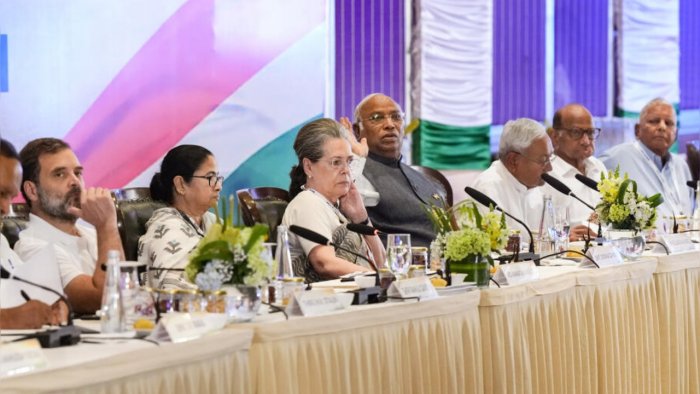19, July, 2024
In a bid to challenge Prime Minister Narendra Modi’s ruling Bharatiya Janata Party (BJP) in the upcoming parliamentary elections, more than two dozen Indian opposition parties have formed an alliance called “INDIA.”
The alliance aims to safeguard the principles of democracy and the constitution, while also addressing critical issues such as rising prices and unemployment. However, Modi and the BJP have criticized the alliance, labelling its members as opportunistic and corrupt. Despite the formation of the alliance, the BJP remains the favourite to win the next elections. Let’s delve deeper into the details of this developing political landscape.

The Formation of the ‘INDIA’ Alliance
The ‘INDIA’ alliance, comprising 26 opposition parties, was announced after a two-day meeting in Bengaluru. The parties, including the main opposition Congress party, have put aside their differences to unite against the BJP. Mallikarjun Kharge, the president of the Congress party, stated that the primary aim of the alliance is to safeguard democracy and the constitution. The alliance hopes to build a common platform and coordinate efforts to challenge the BJP in the upcoming parliamentary elections.
Common Goals and Challenges
The ‘INDIA’ alliance has outlined its focus on fighting rising prices and unemployment, which are pressing issues affecting the Indian population. By addressing these concerns, the alliance aims to resonate with the voters and present a viable alternative to the BJP. Additionally, the alliance has criticized the BJP’s alleged persecution of Indians and emphasized the importance of building a strong economy for the welfare of the nation.

BJP’s Response and Criticism
In response to the formation of the ‘INDIA’ alliance, Modi and the BJP have criticized the opposition parties, labeling them as opportunistic and corrupt. They argue that these parties have defamed India globally but are now trying to save their own existence and that of their families. Modi, speaking at an NDA (National Democratic Alliance) meeting, stated that political alliances built on negativity seldom succeed. He also emphasized the achievements of the NDA, which was launched in 1998.
The BJP’s Grand Alliance
To counter the ‘INDIA’ alliance, the BJP is reviving the NDA as a grand alliance. The NDA, which had diminished in influence since Modi came to power in 2014, is being reassembled to ensure the BJP’s chances of winning a third term. The NDA meeting, held in the capital, brought together 38 parties, many of which have limited regional influence. Modi highlighted the unity and inclusiveness of the NDA, contrasting it with what he perceived as the divisive nature of the opposition parties.
The Way Forward for the ‘INDIA’ Alliance
The ‘INDIA’ alliance plans to form a coordination panel in its next meeting and appoint a convenor. One of the significant challenges for the alliance would be to allocate seats to different parties to contest one-on-one against the BJP. This allocation process requires careful consideration and negotiation among the participating parties. The alliance’s ability to present a united front and effectively challenge the BJP remains to be seen.
The formation of the ‘INDIA’ alliance signifies a concerted effort by various opposition parties to challenge the dominance of the BJP in Indian politics. With a focus on safeguarding democracy, addressing economic issues, and countering alleged persecution, the alliance aims to offer an alternative vision for the country. However, the BJP has dismissed the alliance as opportunistic and corrupt, reasserting the achievements of the NDA. As the political landscape evolves, the upcoming parliamentary elections will provide a clearer picture of the electorate’s response and the effectiveness of the alliance’s strategies.












